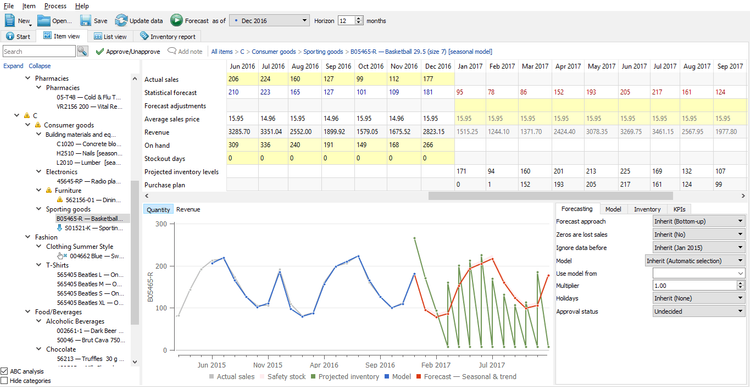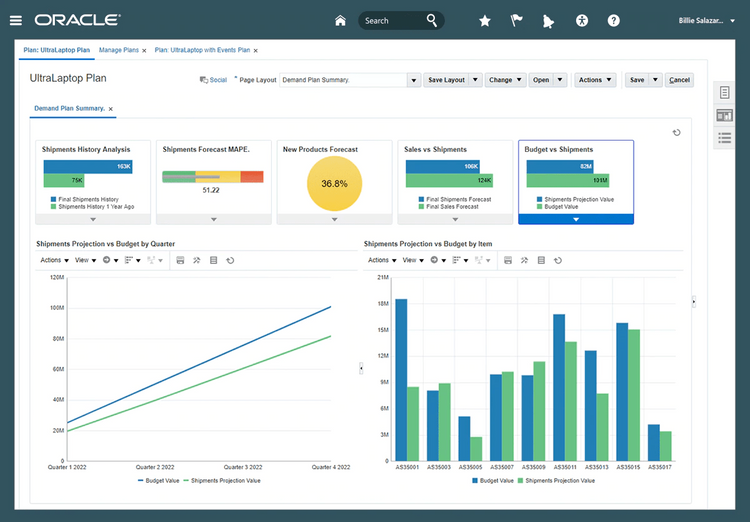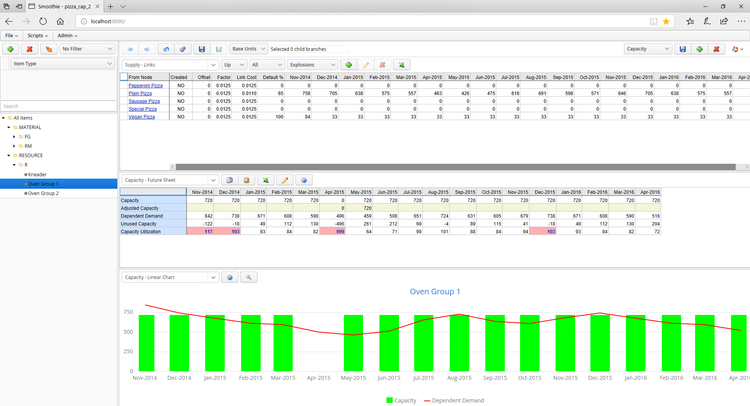Demand Planning vs. Supply Planning
Demand and supply planning are commonly confused or sometimes used interchangeably when discussing the overall optimization of inventory and supply chain management. Demand planning aids in forecasting customer demand, while supply planning manages inventory to meet targets of the forecasted customer demand. While these two concepts are closely related (enough that a small business can combine both into one department), a growing distribution and/or manufacturing business will recognize the differences these two functions have and the importance their role plays.
Key Takeaways
- Demand Planning focuses on forecasting customer demand, using historical data to guide inventory and supply chain decisions.
- Supply Planning ensures inventory and production align with forecasted demand, balancing manufacturing and logistics efficiency.
- S&OP (Sales & Operations Planning) integrates both demand and supply plans to create a unified business strategy.
- Demand and supply planners collaborate closely but operate independently for optimal efficiency.
What is Demand Planning?
Demand planning is the first part of supply chain management. It forecasts customer demand for products or services, pulling data from various sources to help companies predict future demand.
Demand planners consolidate a large amount of data, ranging from historical sales data to data from partnered distributors or retailers. This data can be used to create both constrained and unconstrained demand forecasting, which shows the maximum demand potential with and without limitations in cash flow and production capability.
Get real-time inventory analytics with the best demand planning software.
Quality logistics software handles everything from the point of origin to the point of consumption–tackling transportation, warehousing, material-handling, and more. Using a more focused approach, demand planning software lets businesses estimate future sales to improve the accuracy of inventory management and it’s replenishment.
By better planning purchases, a business will ensure inventory stock levels are where they need to be. The goal is to increase inventory turns and fill rates beyond what a typical ERP system or supply chain management software is capable of doing.

What is Supply Planning?
Supply planning is the process of determining how best to meet the demand for products while optimizing resource usage and minimizing costs. In short, it tries to meet the demand forecasts as efficiently as possible. Supply planning has a bigger focus on manufacturing lead times, minimum order quantities, leveling production, and managing safety stocks.
A supply plan can only work with a demand plan in place. This is because a supply plan will input the demand plan and all component data, which generates a master production schedule. Once in place, the supply planning reviews capacity and its impact on resources–making revisions as needed along the way.
Supply planning is just a cog in the sales and operations planning (S&OP) wheel. Supply chain planning systems help create needed forecasts, determine inventory to support the forecasts, determine the time to acquire this inventory, and figure out which factories are capable of completing these plans, before finally scheduling the work.

What is S&OP?
Sales and Operations Planning (S&OP) is a process companies use to align their sales, marketing, production, and supply chain departments to balance demand and supply. This information is usually pulled from data-heavy fields of your business, such as sales and marketing or manufacturing and distribution. Together, this data is used to improve inventory planning (or in other words, demand planning and supply planning).
Create a unified business plan with sales and operations planning software.
By analyzing change history, annotations, and assumptions, S&OP can help your business make the final decision on adding products, changing your manufacturing process, or altering how you run your deliveries or overall distribution. In short, many consider sales and operations planning to be the one such process that can help align supply with demand. This is because the outcome of an S&OP process is a consensus-based operating plan that helps a company create supply against the expected demand of their products.
Demand planning and supply planning go hand in hand by following a process (or flowchart) of sorts that also brings in the company finances and sales. This helps create forecasts, determine necessary inventory levels, and determine the time and locations needed to complete these purchasing and production plans.
An S&OP flowchart looks like this:
Demand Planning ➡️ Inventory Optimization ➡️ Replenishment Planning ➡️ Master Production Scheduling and Procurement ➡️ Finite Scheduling

What are the Differences Between Demand and Supply Planning?
Demand planning forecasts customer demand while supply planning focuses on inventory control to meet the targets of a demand forecast. Supply planning relies heavily on the demand projections that a demand planning software (or department) creates, and supply planning usually takes the lead from the demand planning determinations.
While closely related, demand and supply planners must work together but still operate as separate departments in order to succeed. Demand planners will usually create constrained and unconstrained demand forecasts to analyze a business’ limitations in meeting demand or experiment on the maximum demand potential without limitations.
By having both demand and supply departments working together via integrated business planning, you’ll be able to arrive at a single plan both teams of planners can use in their long-term and short-term objectives.
Both types of demand planning allow the business to better manage client orders and keep supply costs low–accomplished by reducing the amount of inventory needed to meet certain goals.
